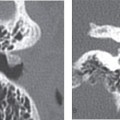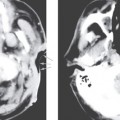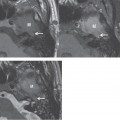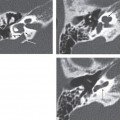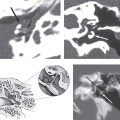CHAPTER 7 External Otitis
Epidemiology
Otitis externa is a common disease affecting all age groups and is usually infective in etiology. Though bacterial infections of the skin of the external auditory canal are the commonest cause, fungal infection can also occur (otomycosis). Infections are more prevalent in hot and humid climate conditions, and are often associated with trauma to the skin of the external auditory canal, such as during mechanical removal of cerumen. Swimming is considered a risk factor, hence the term swimmer’s ear. Malignant (necrotizing) otitis externa is a particularly aggressive form of infection occurring in a select patient population and is responsible for considerable morbidity and mortality.
Clinical Features
Otitis externa can cause a variable amount of pain (otalgia) and discharge (otorrhea), but it seldom causes significant morbidity. Bacterial infections are usually more symptomatic. Depending on the degree of swelling and debris in the external auditory canal, there may be conductive hearing loss. Systemic signs such as fever and (pretragal) lymphadenopathy may be present.
Malignant (necrotizing) otitis externa is a particularly aggressive life-threatening form of infection caused by Pseudomonas aeruginosa infection typically in elderly diabetics and individuals with other immunosuppressed states, such as HIV patients or those who have undergone chemotherapy. Clinically, a high index of suspicion in the susceptible patient population is required for diagnosis. Nonspecific granulation tissue may be seen along the inferior wall of the external auditory canal (at the bony-cartilaginous junction) with exquisitely painful otorrhea. Cranial nerve palsies may result in advanced cases.
Pathology
The commonest organisms responsible are Staphylococcus aureus and Pseudomonas aeruginosa. Fungal infections with Candida and Aspergillus are less frequently seen. Malignant otitis externa is associated with aggressive osseous destruction of the temporal bone and mastoid. Advanced cases may result in intracranial and infratemporal extension with meningeal and cranial nerve involvement.
Treatment
Stay updated, free articles. Join our Telegram channel

Full access? Get Clinical Tree


